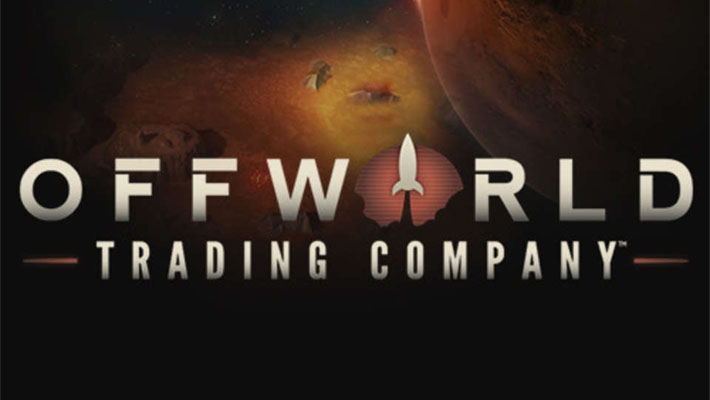
When talking about retrogaming, 1980s computer games are often unfairly overlooked despite the fact that they were a big influence on what came later. For many gamers (especially those in America), it seems that the 80s were just arcades, Atari 2600, the (largely overblown) video game crash and the NES and the computers only started being worthwhile in the next decade with the rising popularity of LucasArts adventure games, the arrival of Myst and its clones and the breakthrough success of id Software’s first person shooters. At least in Poland and some other European countries, you can still find people with the knowledge of ZX Spectrum, Commodore 64, 8-bit computers by Atari or the cult classic Amiga.
Offworld Trading Company
Publisher: Stardock Entertainment
Developer: Mohawk Games
Platform: Windows PC, Mac OS
Release Date: April 28th, 2016
Players: 1-10 Players
Price: $19.99
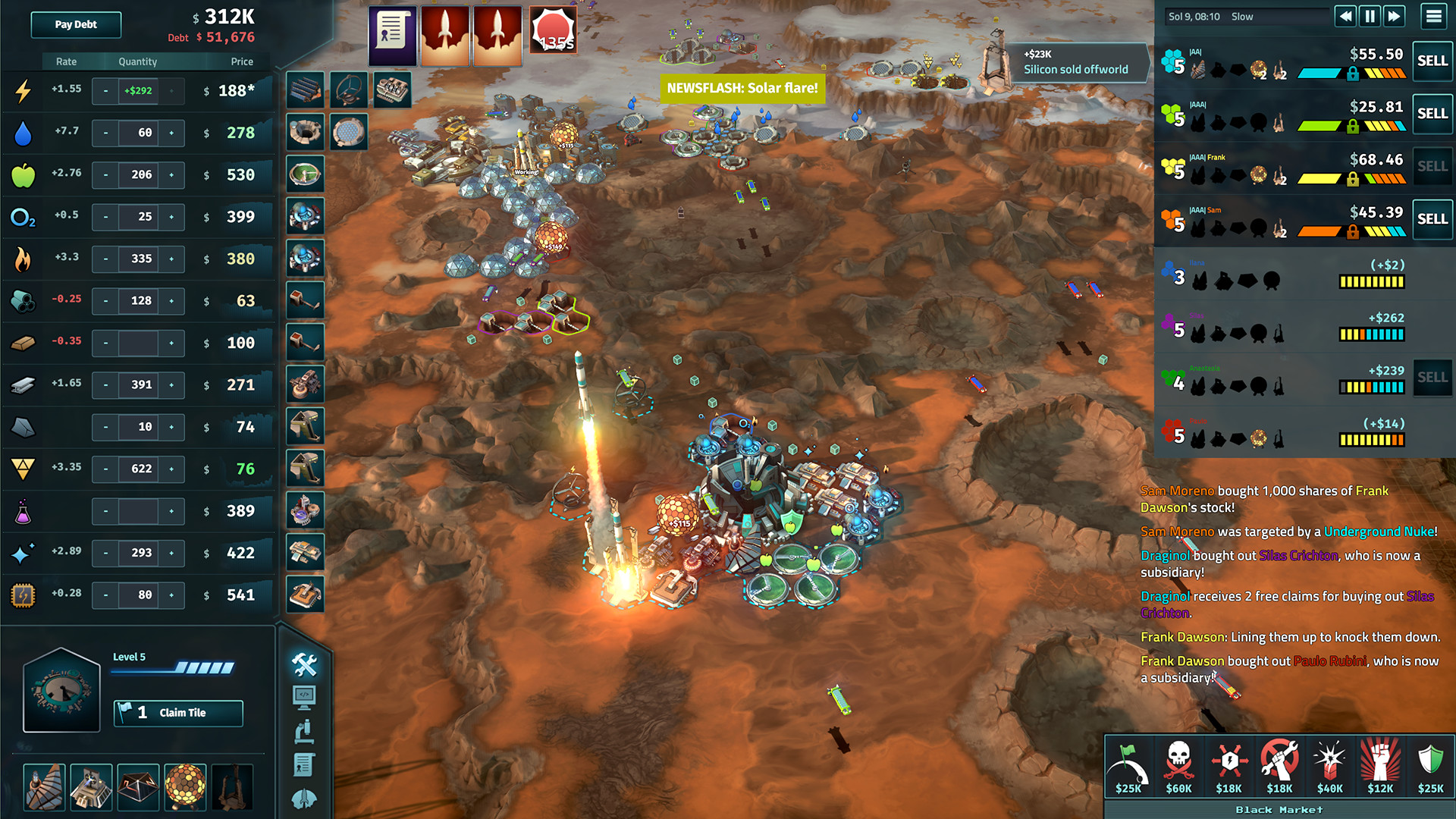
Given the relative obscurity of older computer games, it’s refreshing to see a game that not only takes inspiration from one of the Atari 800 classics but also openly acknowledges it and makes references that will surely fly over many peoples’ heads. Such is the case with Offworld Trading Company, an economics-focused strategy game about colonizing Mars in which one of the helpful items you can buy on the black market is called ‘MULE’ and, as one character points out, was invented by ‘Dr Bunten’ – a reference to M.U.L.E. and its creator, Danielle Bunten-Berry.
It’s not surprising to see how many people (even professional reviewers) miss that, even though Offworld builds so heavily on that game’s foundations that comparing the games and showing what the newer one does differently makes much more sense than talking about it in isolation.
In M.U.L.E., the players would take turns picking plots of land and turning them into farms (preferably near the river), solar energy plants (preferably on the plains) or mining operations (preferably in the mountains) through the use of titular robotic animals. The game was turn-based but also time-sensitive, with limited time to perform those actions.
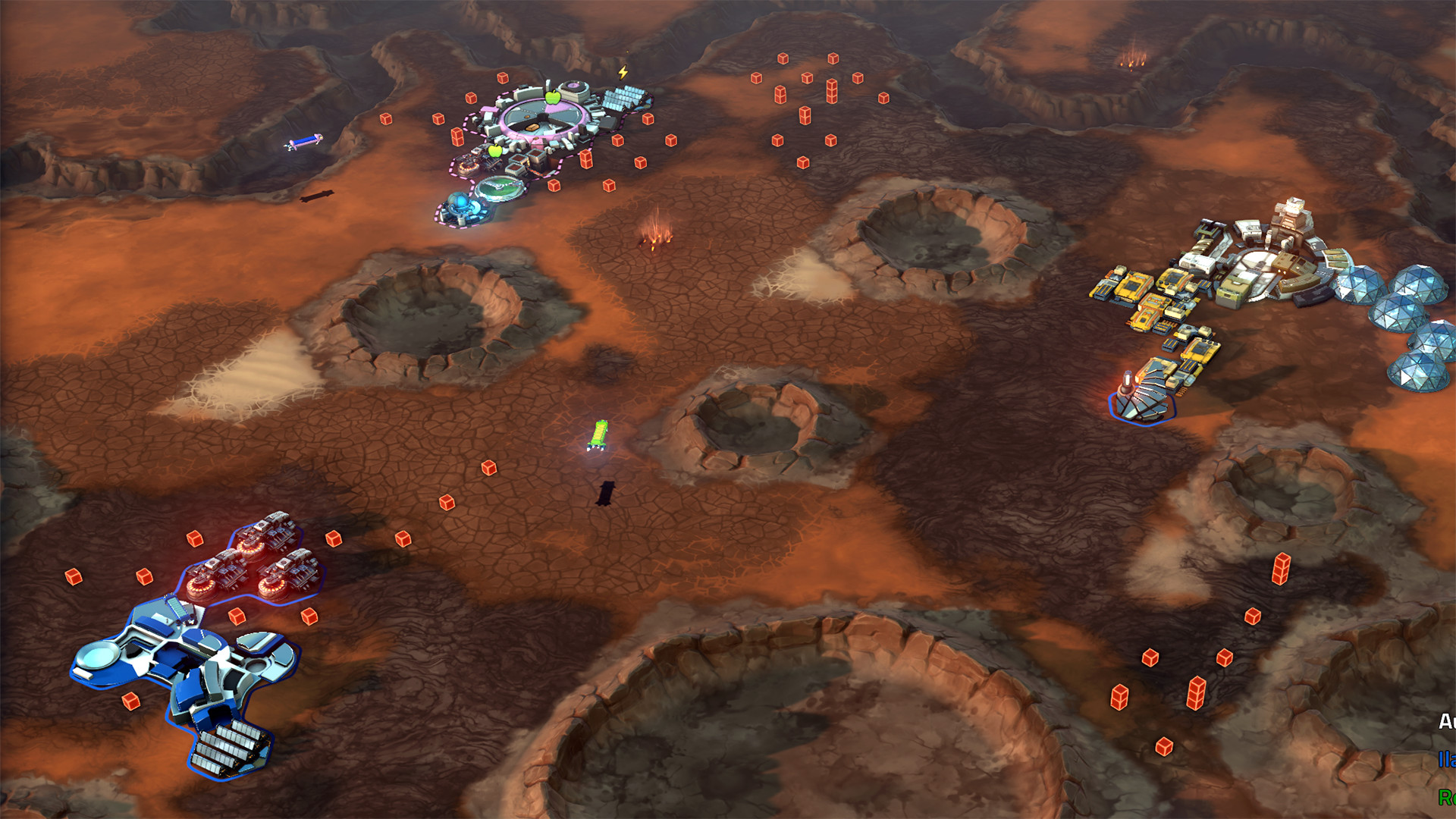
Between player turns, there would be an auction phase in which produced goods could be bought and sold directly between the players or from and to a computer-controlled colony shop. The resource prices would be negotiated between players and affected by the laws of supply and demand, and they’d also affect the price of goods like M.U.L.E.s and land. While the game’s goal was to make as much profit as possible, the resources weren’t there just to be bought and sold – the amount of food and energy affected the efficiency of player’s production and the amount of time given for each turn.
Offworld Trading Company shares many of the same features. Here, you start the game by scanning the land for a good place for your headquarters and are given a certain number of land claims which can be used to place different buildings around the map. The first thing you’ll use those claims for is going to be extracting resources which are needed to both make a profit and sustain your company. The number of available resources is bigger than it was in M.U.L.E. though, and some of them are not extracted directly but instead produced by processing base materials.
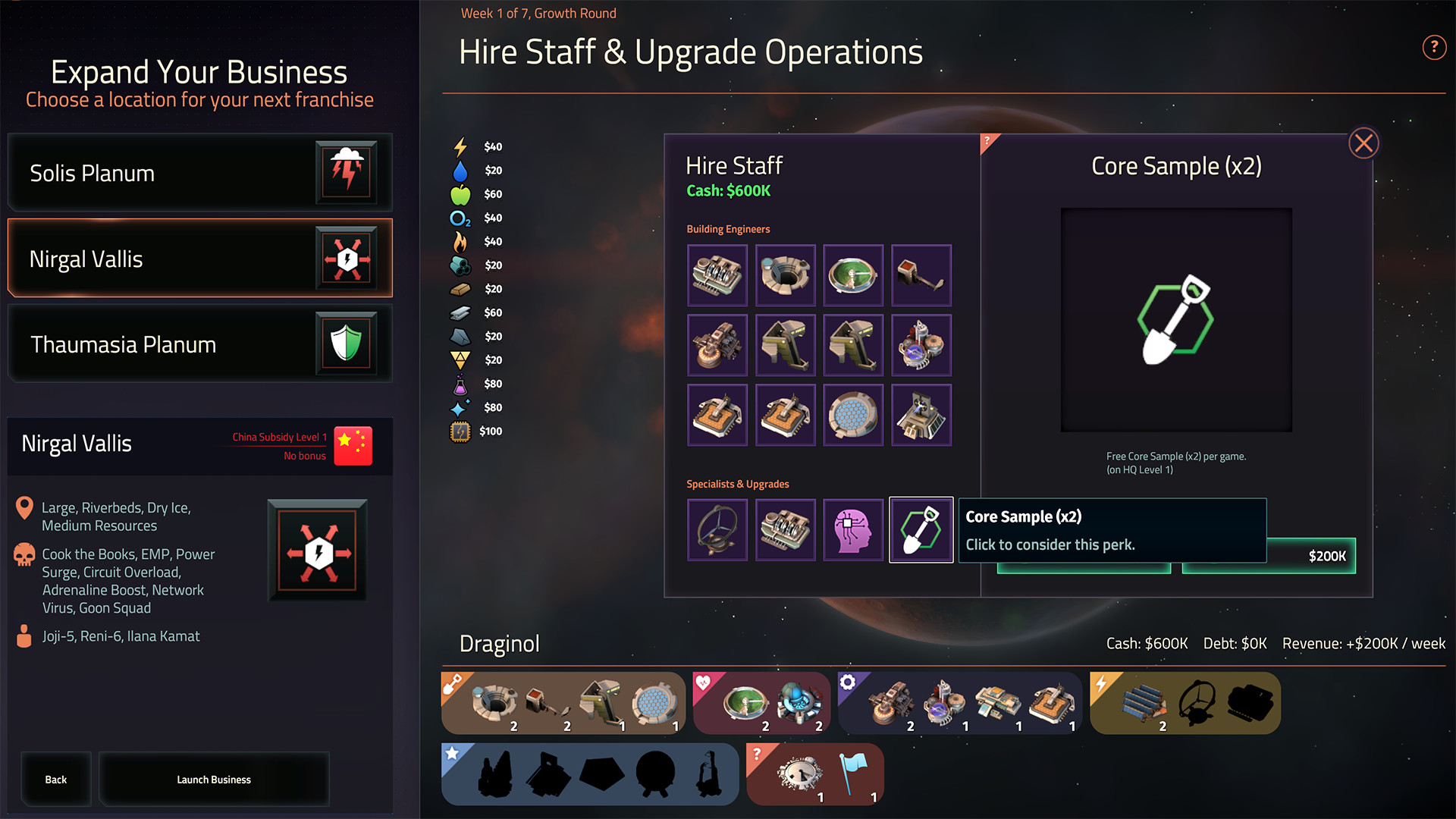
The number of available claims is always small and the only reliable way of increasing them is by spending some resources to expand your base. While the game is real-time, base expansion serves a purpose not dissimilar from turns in M.U.L.E.: you’ll be able to increase and/or diversify your production but you’ll also need to deal with increased maintenance costs. Surplus resources can be sold and the ones you need can be bought but everything is affected by supply and demand: as more of one thing is sold the price gets driven down and vice versa.
You can usually stockpile resources while waiting for better offers or hold off production and wait for better prices but some things will be traded automatically: food, water, oxygen, energy and fuel are all needed to keep your base operational, and will be bought if you don’t have them and surplus energy will be sold because you either can’t store it or, with a certain patent, can only store a limited amount.
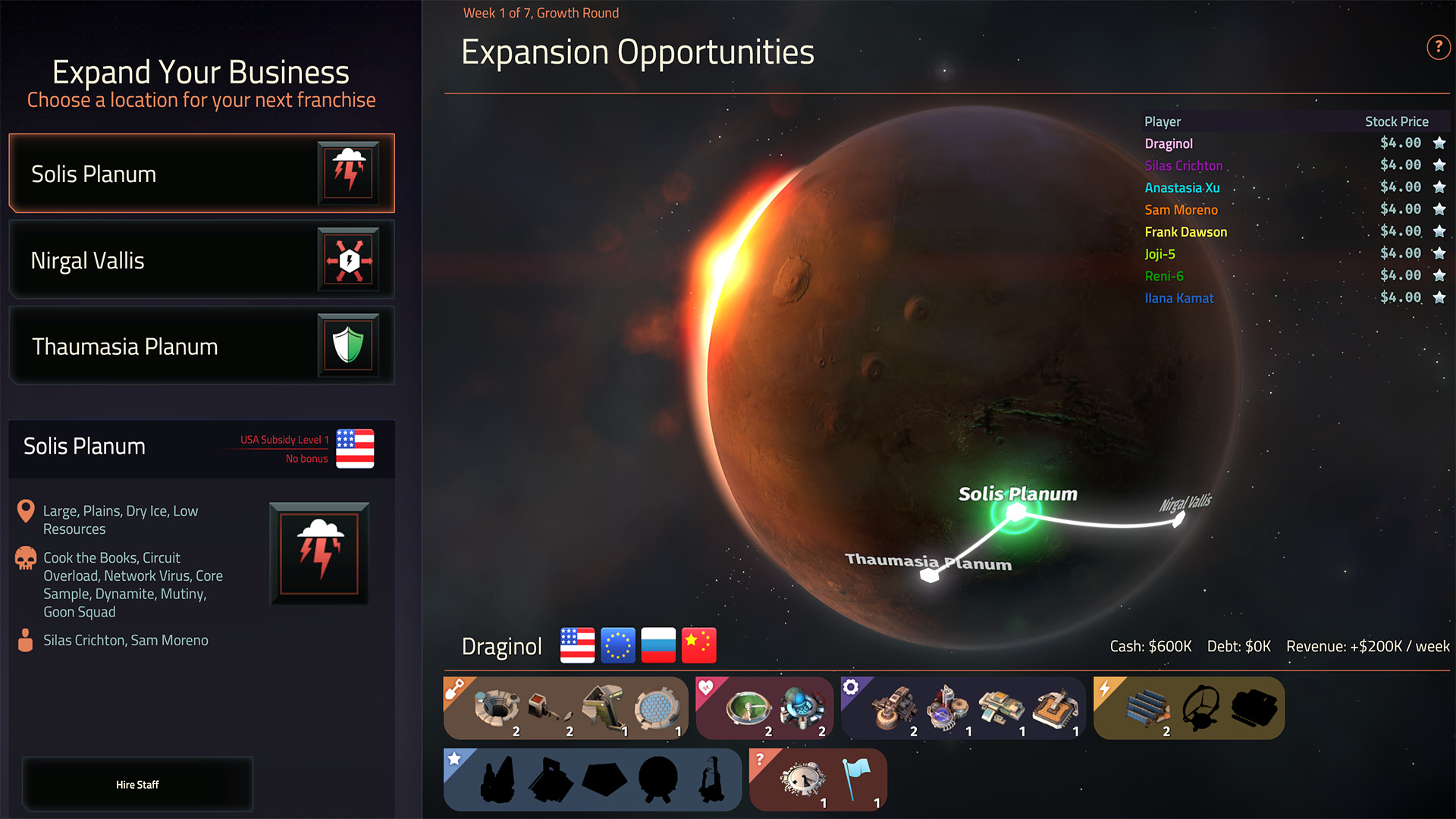
In M.U.L.E., the gameplay differed slightly based on which alien race you chose but in Offworld Trading Company, who you play as is much more important as it affects the biggest early-game decision – your positioning. For example, robots don’t need food, water or oxygen to survive but they do need more energy so you don’t need your HQ to be close to water but a geothermal vent would be a lot of help.
The scientists, on the other hand, are able to produce advanced resources by directly placing a processing building on a base resource tile (without the need for mines, quarries or water pumps) so they’ll profit from proximity to diverse resources, even in small numbers. The effects of positioning are twofold: having buildings of the same type adjacent to each other will increase their output (the same way it did in M.U.L.E.) and if your buildings are far from the HQ, you’ll use up more fuel on transport (the closest parallel in the 1980s game would be the need to run between the colony and your land which took precious time).
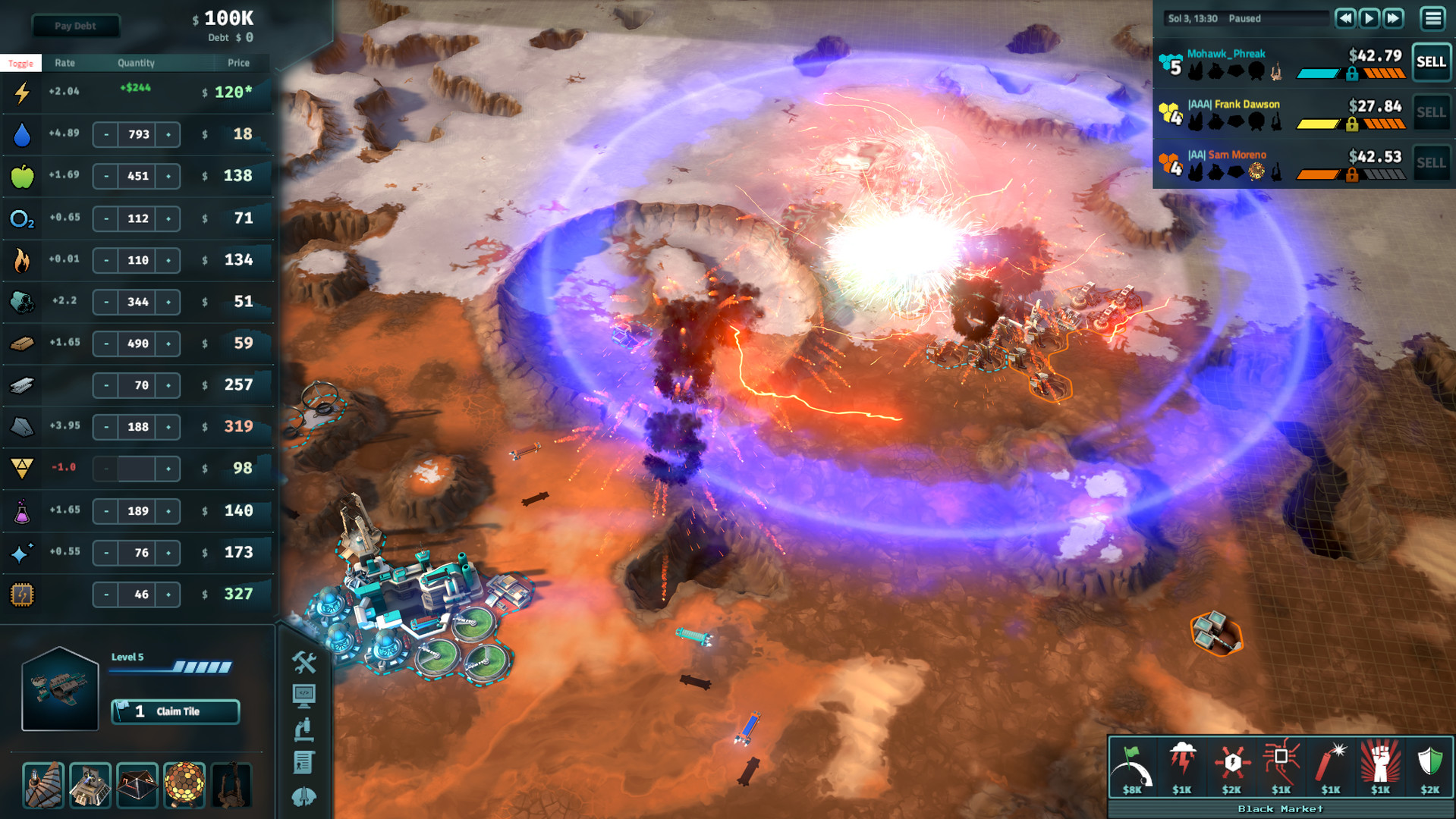
Players in Offworld are able to spend their money on the black market to either improve their own situation or to sabotage the other players. This mechanic also has a parallel in M.U.L.E. but its execution differs greatly in its effect on gameplay. In the Atari game, there were semi-random events between the turns which could increase profit or cause different kinds of losses. Positive events were more likely to happen to the losing players while those in the lead were more likely to be struck by disasters.
It wasn’t exactly the most fair mechanic but Offworld proves why it might have been necessary. In Offworld Trading Company, a bad start means that you’ll expand your base later and won’t be able to catch up with the other players who already moved to advanced resources and bigger profits. On the other hand, a good mid-game performance can launch you so far ahead of the competitors that the endgame becomes more of a victory lap.
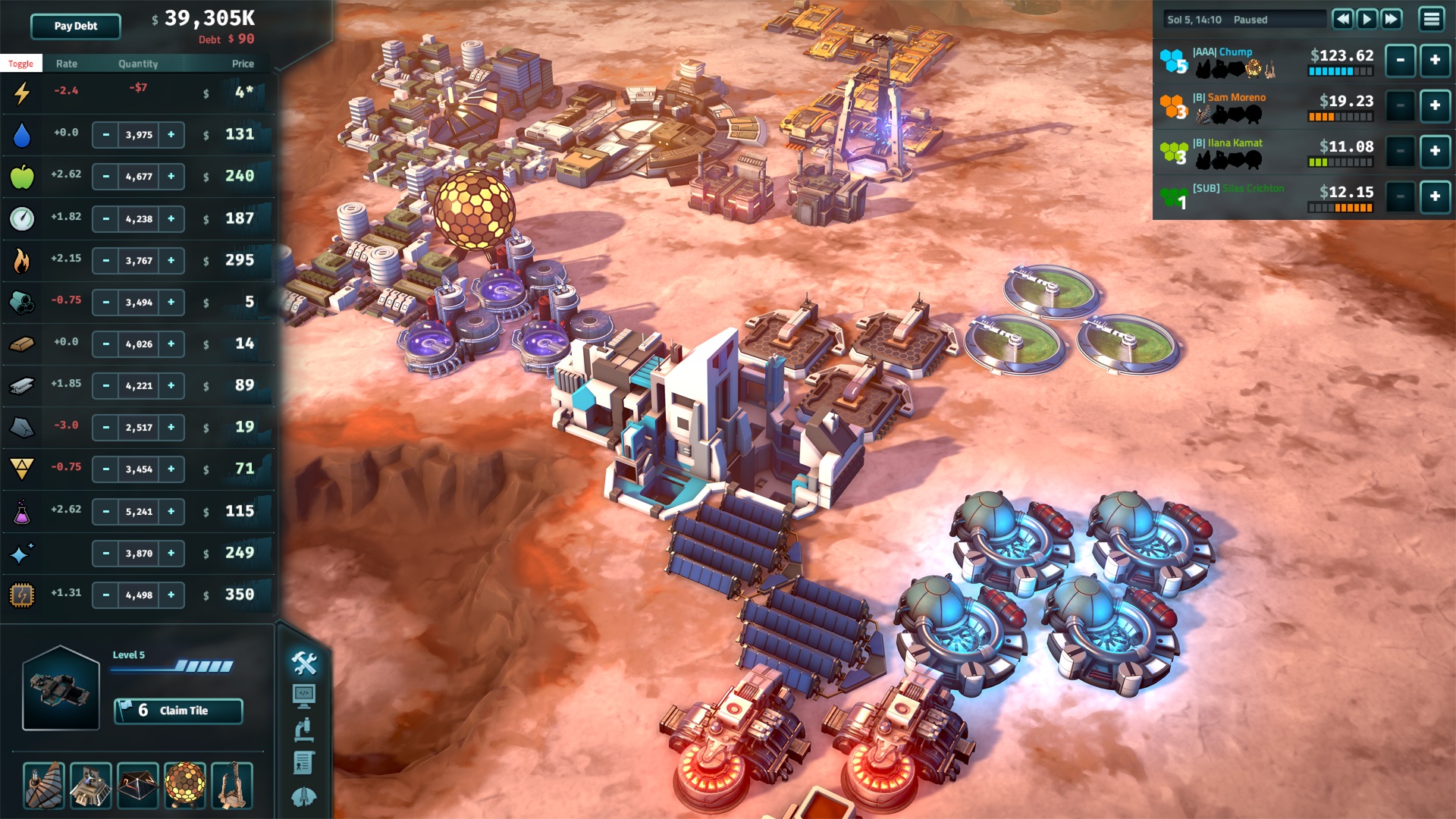
The outcome is rarely decided near the end, the winner often gains momentum around the halfway point and keeps increasing his advantage until he’s able to buy the competition out. The biggest contributor to that has to be the offworld market building which allows launching massive amounts of resources into space for massive profits – it costs a lot and you need to expand your HQ to at least level 4 (out of the maximum 5) to build it but the first player to get it will usually be the winner.
Offworld Trading Company features a great tutorial which not only makes you learn the game by slowly introducing complexity and having you play as different characters, it also gives the game a lot of character through a simple storyline about learning how to do business on Mars by working at different companies.
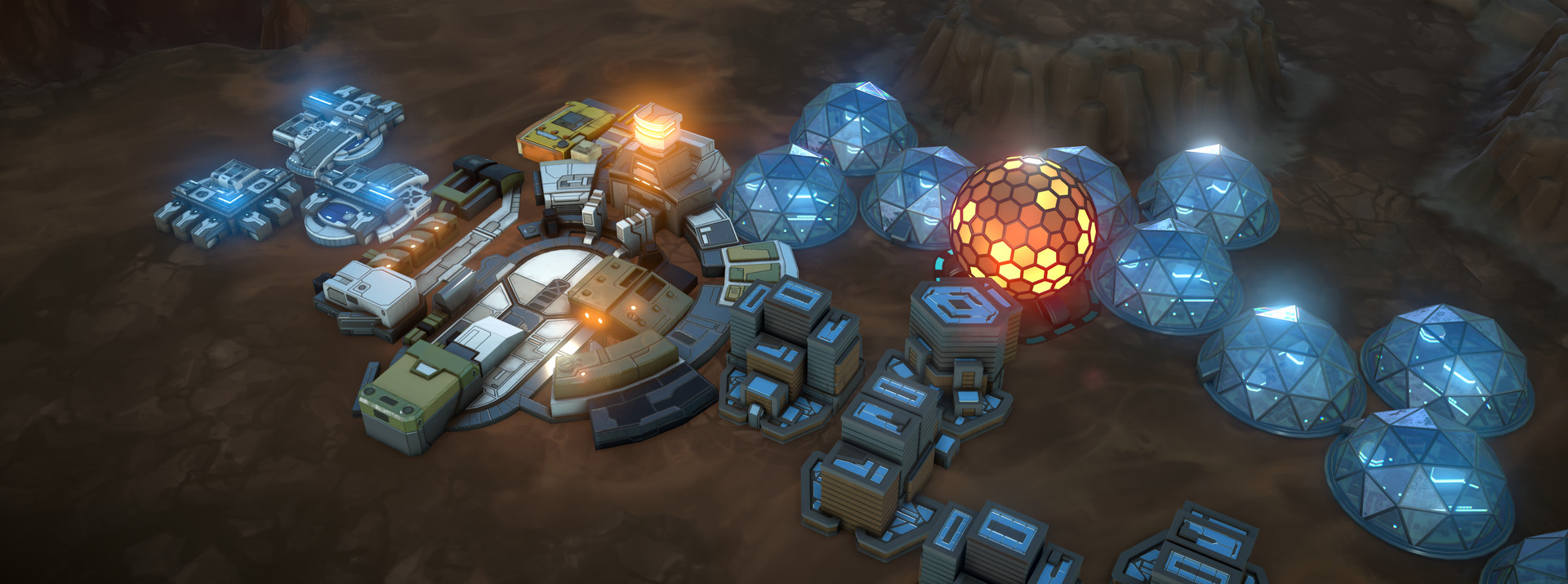
While the game is not focused on narrative, it’s nice to interact with its colorful CEOs and listen to their stories and different ideas that drive their business. It’s a shame that outside of the tutorial, all those things are downplayed – even in the campaign mode which, despite mixing gameplay up in interesting ways (you don’t buy the competition out until the final game, before that you seek to become a majority shareholder in different colonies by investing in them over 7-day periods; you also can’t build everything you want as the buildings you are allowed to use and their efficiency are affected by the engineers you hire between the games), has no plot to speak of.
The game’s audiovisual aspect is a mixed bag. Most of the time, both the graphics and the music fit squarely into the ‘nothing special’ category. On the other hand, the static images representing different CEOs, the posters of companies you see on the loading screens and the announcer voices are pretty cool and add to the personalities of the different characters you see in the tutorial. It’s also oddly fascinating to watch how your buildings unfold and expand after you place them on the map. In general though, the game looks quite average.
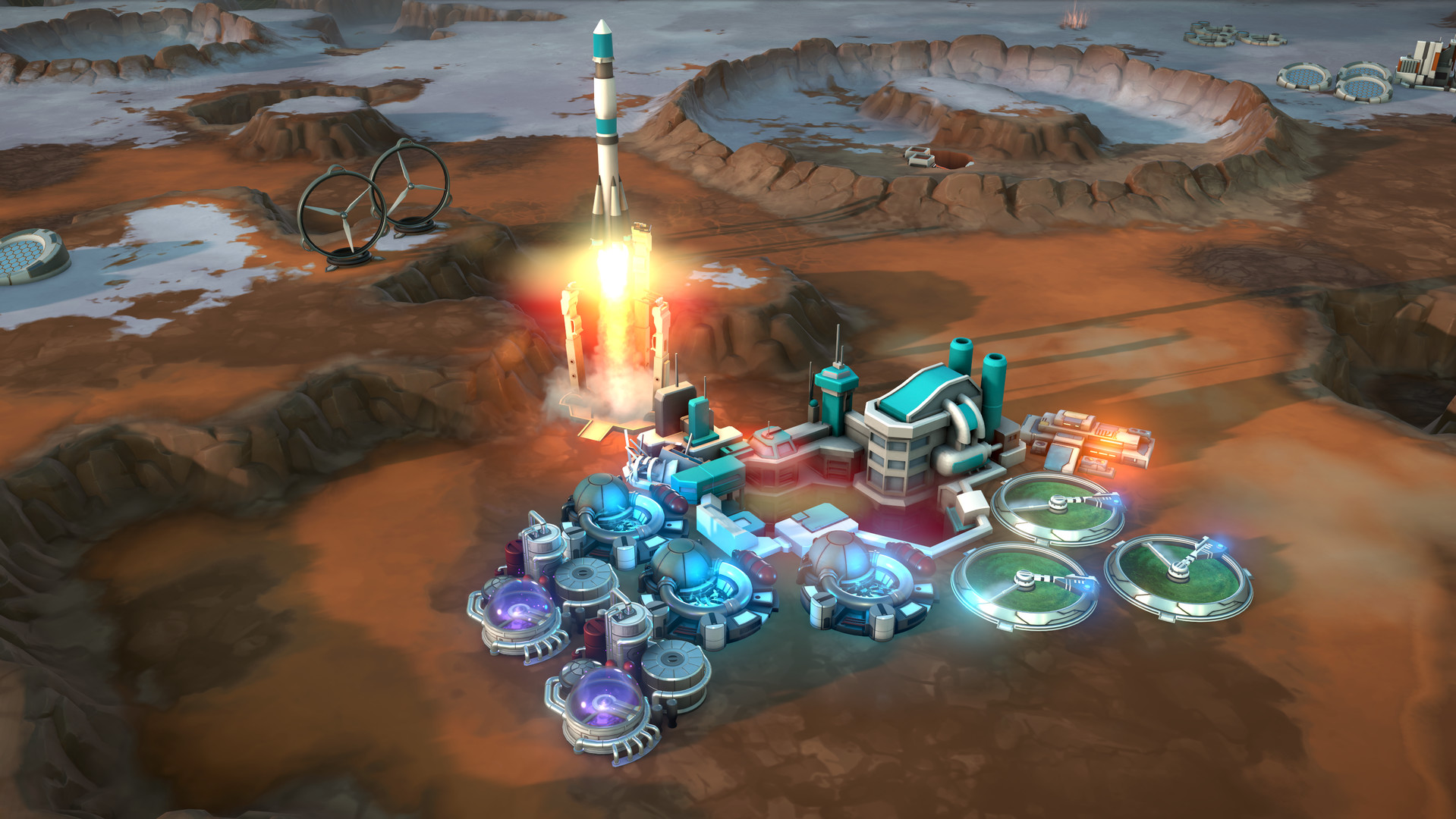
All in all, Offworld Trading Company is a fun little economic strategy game which continues the tradition of Atari 800 clasic M.U.L.E.. While the idea of extracting resources and selling them might not sound exciting, the game manages to make it as tense as combat can be in a traditional RTS.
On the other hand, the game does suffer a bit from a lack of content; once you’ve finished the tutorial, a few skirmishes and the campaign, the game doesn’t offer much more, outside of competitive multiplayer.
Offworld Trading Company was reviewed on Windows PC using a review copy provided by Stardock Entertainment. You can find additional information about Niche Gamer’s review/ethics policy here.